The greater your brand awareness at a given point in time, the more people will likely search for your brand. Consequently, you’d expect to see an increase in branded search impressions (and possibly clicks) in Google Search Console.
But have you ever tried to figure out how different marketing channels affect branded search impressions? It’s not easy. The more marketing channels you use—and the more campaigns you run across them—the harder it is to isolate the source of a boost in branded search.
This all makes it difficult to know precisely which levers to pull to get people searching for your brand.
To figure out which channels have the greatest ties to branded search impressions (and partly just out of curiosity), we conducted some analysis.
We evaluated data from two of our domains: https://www.brafton.com/, and https://www.brafton.co.uk/.
Here’s what we learned:
(Disclaimer: These recommendations are based on real data from our sites; we can’t say with certainty that they would yield the same or similar results on other websites.)
1. Unbranded impressions impact branded search the most
There’s a tight correlation between branded impressions and unbranded impressions (impressions you earn from keywords that don’t have your brand name in them).
We used the Pearson Correlation Coefficient and dozens of data points to demonstrate the relationship. Here’s how the scoring works for positive correlations:
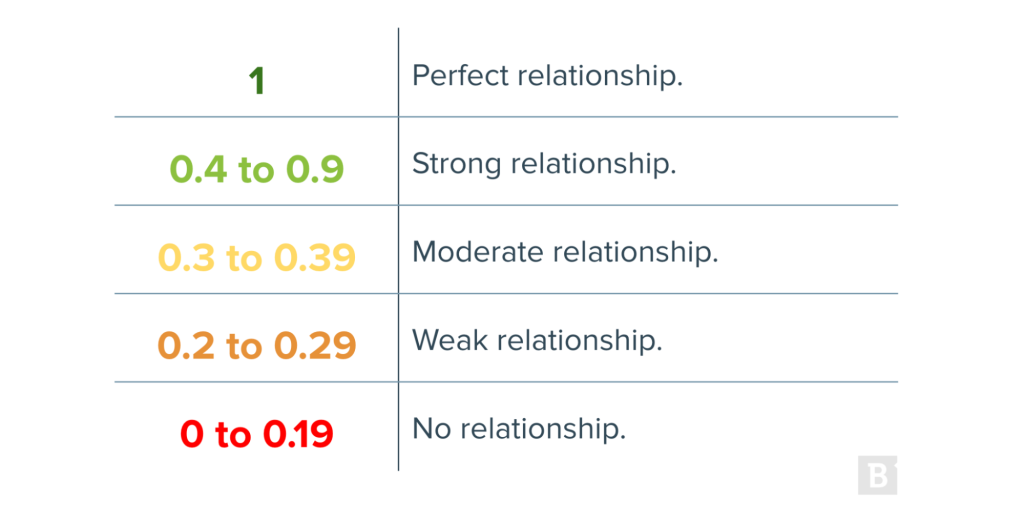
Across both of our domains, we saw relationships of 0.5 (US) and 0.6 (UK) respectively between branded search impressions and unbranded search impressions, which is strong.
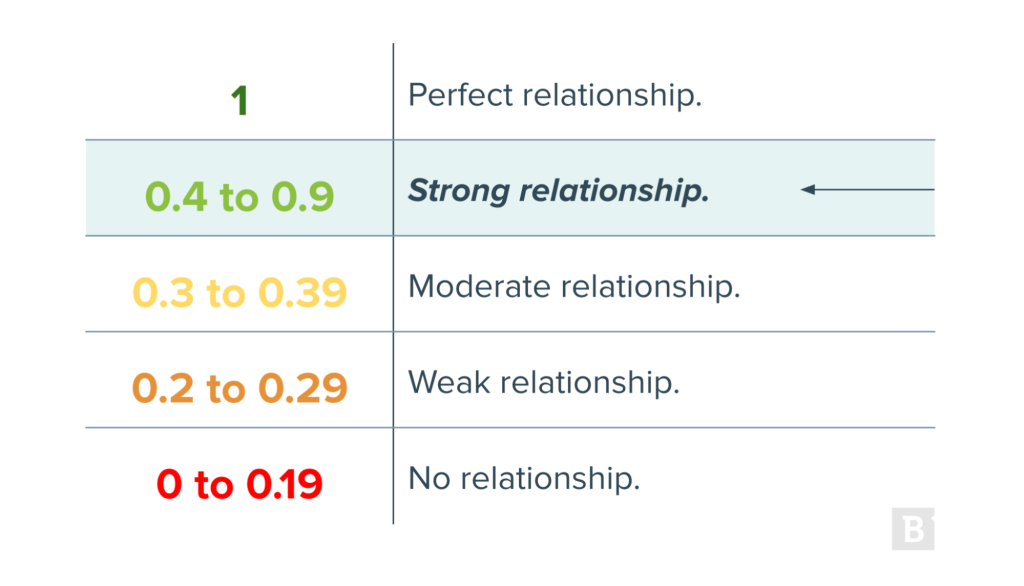
This means performing well for unbranded keywords leads to higher performance for branded search. More simply, if you want more people to search for your brand, the No. 1 way is to rank for more unbranded keywords.
What to make of this: The data seems to suggest that when we improve our keyword rankings and impressions for unbranded search terms, more people start searching for our brand. Why?
The parsimonious explanation is that, when someone searches “content marketing services” or “funny email sign offs” and comes across one of our landing pages or blogs, a logical next step might be to search our brand to see what others across the web are saying about us. They might want to see where else on the web we’re referenced before inquiring about price, or even subscribing to our newsletter.
Another possibility? Having a strong organic search presence, especially for informational-intent content, helps us drive up navigational search phrases (e.g., “HubSpot’s list of top content marketing tools.”)
2. Referral traffic from other sites takes the silver medal
Referral traffic is any traffic that comes from someone else’s site—for example, a list of companies published on another blog, or a business directory.
We looked at the relationship between referral traffic and branded search for our US domain. And this was the number we got: 0.5.
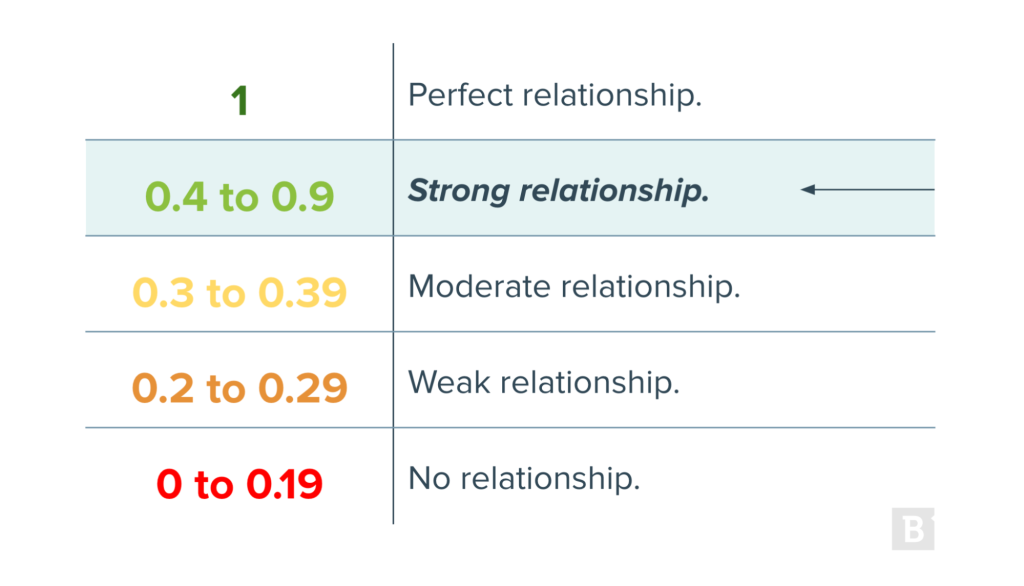
The second data set from our UK domain gave us a weaker, though still positive, relationship of 0.22.
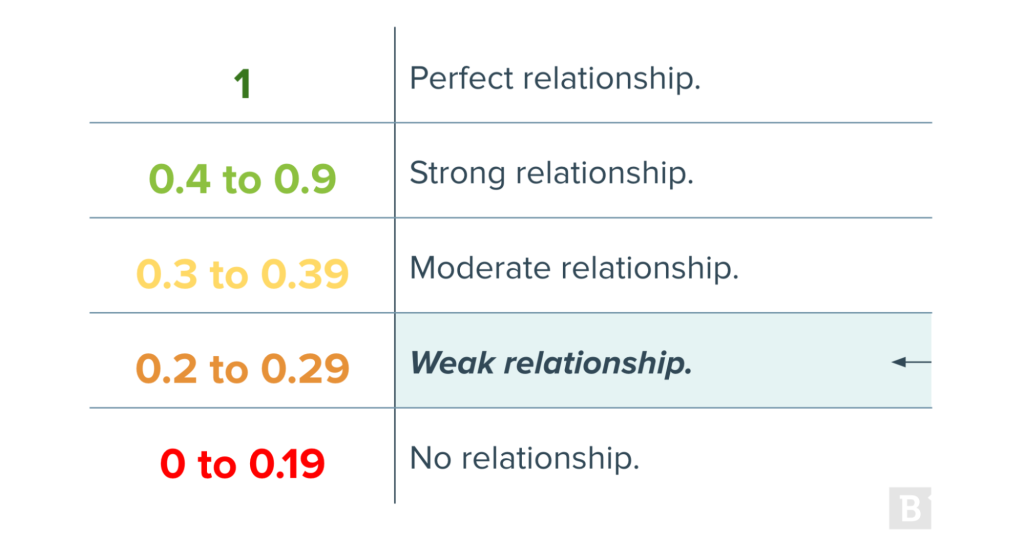
What to make of this: The data suggests that efforts taken to improve referral traffic from outside sources (e.g., directories and other publishers’ sites) will get more people searching for your brand.
Why is this? When someone encounters your brand on a list or directory of “top X companies,” they’ll likely to do one of three things:
- Nothing (or continue scrolling to read the rest of the list).
- Click on a link to your site (if the publisher included one), hence the referral traffic.
- Search your brand name to see what others are saying about it (immediately, or later on), hence the branded search relationship.
It’s worth noting that the US site presented a stronger correlation than the UK site (0.5 vs 0.22). One possible reason for the discrepancy is that we’ve worked much harder to promote referral traffic (with directory and list placement, and backlinking campaigns) for the US site than the UK site.
Of course, ausation and correlation are different beasts, and this narrative is just one possible explanation for what we’ve observed, based on reason (not on irrefutable evidence).
Still, my advice is this: Don’t sleep on referral traffic as a channel for reach and reputation. It’s incredibly important, and becoming more important as SERP landscapes change.
Subscribe to
The Content Marketer
Get weekly insights, advice and opinions about all things digital marketing.
Thanks for subscribing! Keep an eye out for a Welcome email from us shortly. If you don’t see it come through, check your spam folder and mark the email as “not spam.”
3. Display advertising can help in under-penetrated search markets
Until now, two separate sites with totally different datasets have been more or less in agreement, but that changes here.
For our US site, display advertising demonstrated no positive relationship to branded search.
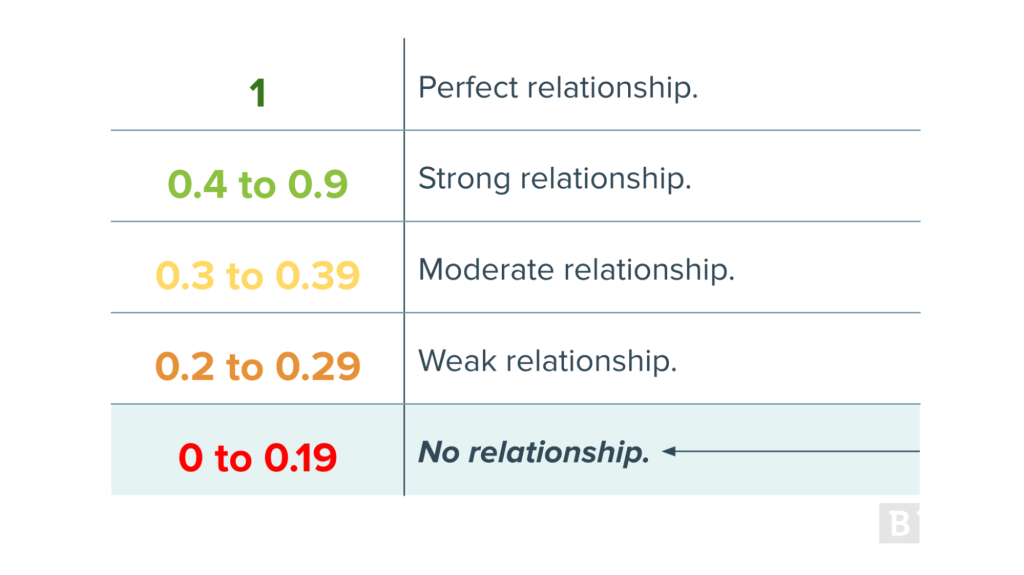
On our UK site, however, we noticed a strong positive relationship of 0.6:
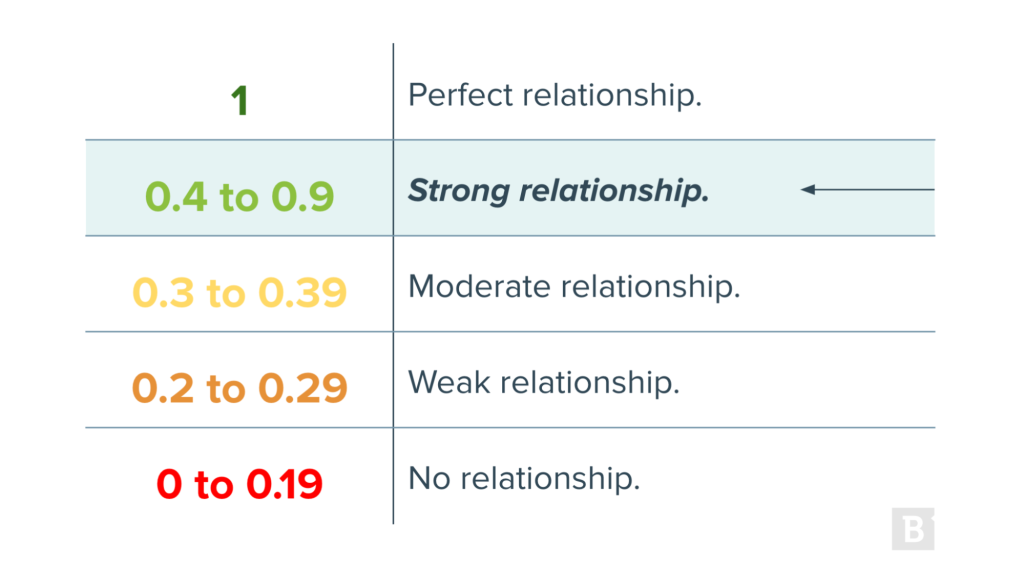
What to make of this: A bit of context is needed here. Our reach via organic search in the US is orders of magnitude greater than in the UK. It’s the channel we’re most likely to be discovered through on Uncle Sam’s side of the pond.
But in the UK? In any given week, we’ll get twice as many impressions through display than on search. Put another way, we’re twice as likely to be seen in a display ad in the UK than on organic search in that region.
And because our search presence is not as established in the UK, there’s a better chance that whoever sees a display ad there hasn’t already encountered us in search, and is more inclined to Google “Brafton” to see what we’re about (because who actually clicks on display ads anymore?).
To be clear, the traffic we generate from organic search is always more qualified and the leads are better. But if you want quick, affordable reach in an under-penetrated market as you build out your search presence, display ads are a pretty safe bet—and they almost certainly will bring in some branded search. The key thing to keep in mind is scale. You’ll have to play around with it before you start to see meaningful results.
4. Email can give you some wild (but unsustainable) boosts
Some people expect you in their email inbox, e.g. newsletter subscribers. Those folks aren’t likely to search for your brand name. They already know you.
However, if you start getting your messaging into new inboxes of people who don’t know you, then you’ll start to see some wild fluctuations in branded search.
We know this because we’ve purchased lists before. The upshot is that we were able to actually win the trust of many of these contacts, and many of them turned into customers.
The other upshot of course, is that in the time we were adding lists to our database (a period of about 24 weeks), we saw a correlation between emails delivered and branded search of 0.8!
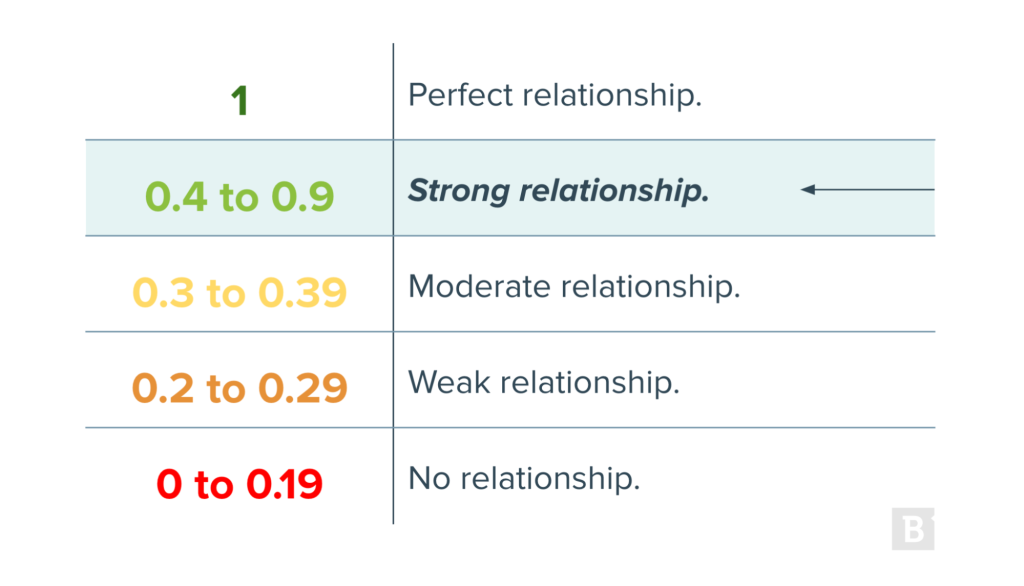
Far and away, that was the strongest correlation we’ve ever established between any channel and branded search.
However, it didn’t last. In the period that followed, that correlation dwindled gradually became weaker, and is now more or less non-existent. .
What to make of this: It started with such promise. Email was demonstrating the clearest relationship with branded search for quite some time. And then a second study across a different time period showed very different outcomes. Why?
It could be some odd function of seasonality, or even list quality. Not every email list will have contacts of equal quality. Without a complete, year-over-year comparison and more control over the variables, it’s hard to come up with any really strong hypotheses.
But for your purposes, I’ll say this: Email marketing has, with near certainty, demonstrated its ability to positively impact branded search. The hard part, at least for us, has been reproducing the exact conditions and variables that led to that initial success. Nevertheless, email is not inherently a brand awareness channel. In our experience, it’s more of a lead-gen, and lead-nurture, powerhouse than a bringer of brand reach.
5. Paid search had zero effect on branded search impressions
We wanted so badly to believe that paid search would boost branded search.
But the data doesn’t lie. The closest we got to any positive correlation between paid search was in the UK at 0.00103985174.
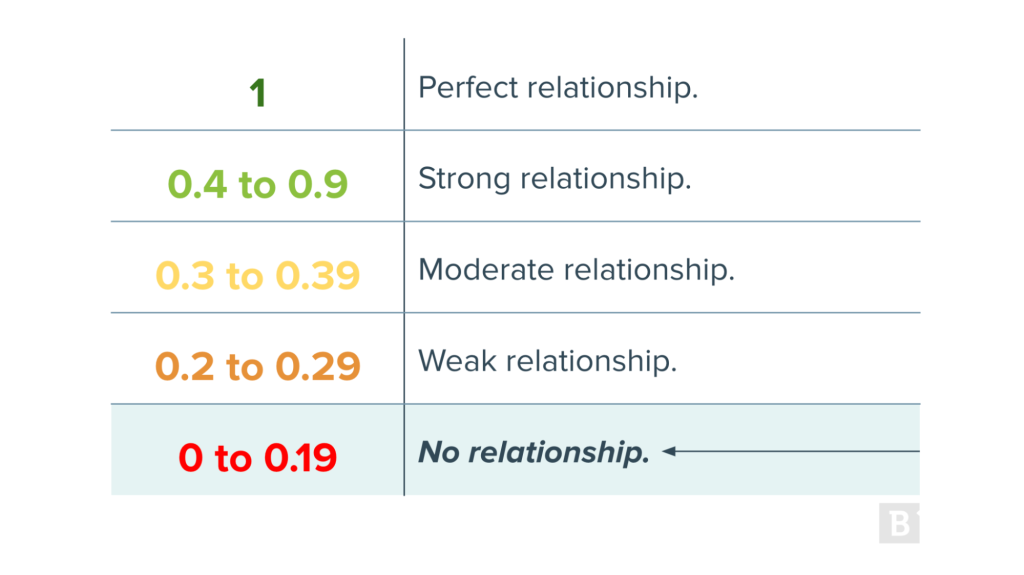
What to make of this: It’s hard to make sense of a relationship that doesn’t exist. But one possibility is that the traffic our paid search ads generated relative to our organic search traffic (both in the US and the UK) was marginal. The same is true for the leads generated, which, while of good quality, were not abundant enough that we could expect a bunch of prospects to start Googling “Brafton” or “Brafton reviews.”
It could also be a matter of scale and cost. Paid search is expensive, and it’s possible we just never hit the inflection point in spend that would be needed to substantially boost our branded search.
Some crucial parting wisdom
In conclusion, good-old fashioned SEO for non-branded keywords might just be the best way to get folks searching for your brand. Second to that is what I consider the most under-appreciated channel in modern marketing: referral traffic. I would have to give third place to display advertising—if and only if the scale of that campaign is greater than the scale of your organic reach.
But the most important lesson is this: Branded search is chiefly a vanity metric.
It’s not a precipitator of a massive influx in leads, and it definitely isn’t an expected outcome of paid search campaigns (I can’t tell you how many times I’ve heard this).
Keep an eye on it, and if you see anomalous highs and lows in Google Search Console for branded queries, look into them. It could be indicative of placement on a well-ranking list on some other site’s publication.
Beyond that, don’t get hung up on it.
We’ve already done that for you.





